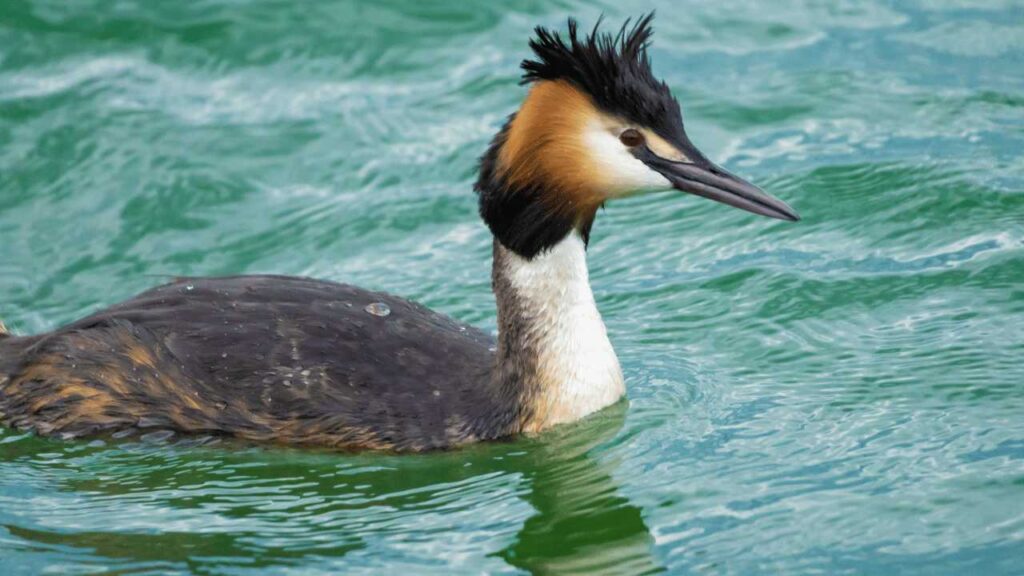Pūteketeke takes the Bird of the Century crown of 2023

Pūteketeke takes the Bird of the Century crown of 2023. In New Zealand, the bird of the century has been declared as the Australasian crested grebe, commonly known as the Pūteketeke. This avian species gained international recognition after a prominent endorsement from British-American comedian and talk show host John Oliver. The announcement of the winner was delayed by two days due to an overwhelming influx of votes following Oliver’s proclamation on his show, Last Week Tonight.
The pūteketeke, recognized for its unique characteristics and brought to prominence by John Oliver’s campaign, has been declared New Zealand’s Bird of the Century. John Oliver’s campaign included strategic moves like purchasing billboards in various countries and even donning a pūteketeke costume on The Tonight Show with Jimmy Fallon to further promote the bird. In the final results, New Zealand’s national bird, the North Island brown kiwi, claimed second place with 12,904 votes, followed by the clever kea, the world’s only alpine parrot, in third place with 12,060 votes.

Pūteketeke takes the Bird of the Century crown of 2023. The pūteketeke stands out for its distinctive behaviors, such as carrying its offspring on its back, actively participating in chick-rearing responsibilities, and employing an unusual method of inducing vomiting by consuming its own feathers to expel parasites. Despite controversy and accusations of fraudulent votes, the bird secured a substantial victory with 290,374 votes out of a total of 350,000 from 195 countries.
The competition, organized by the environmental group Forest & Bird, typically garners around 60,000 votes. However, this year’s contest saw a significant surge in participation, bringing attention to the conservation needs of New Zealand’s native bird species, many of which are endangered or facing extinction due to various factors such as introduced pests, human activities, and habitat loss.
The pūteketeke, classified as “Nationally Vulnerable,” faces the threat of a population decline, with an estimated New Zealand-wide count of fewer than 1,000 birds. The species is similarly struggling in Australia, where the combined population in both countries is believed to be less than 3,000.
The pūteketeke, initially an unexpected contender for Bird of the Century, swiftly rose to prominence due to its distinctive appearance, endearing parenting practices, and its tendency to induce vomiting,” stated Forest & Bird chief executive Nicola Toki.

“We’re not surprised that these charming qualities attracted the attention of an influential bird enthusiast with a massive following.”
The pūteketeke, which nests on southern South Island lakes and is categorized as nationally vulnerable, experienced a conservation effort starting in 2013, resulting in a population increase from around 200 in the 1980s to just under 1,000 today.
John Oliver’s self-described “alarmingly aggressive” campaign for the bird successfully outshone endeavors by local groups, including schools and universities, to promote their favored avian contenders.
“They are weird puking birds with colorful mullets. What’s not to love here?” expressed Oliver about the bird.
Initiated in 2005, the competition aimed to raise awareness about the challenges faced by New Zealand’s native birds, many of which are endangered or extinct due to pest introductions, human activities, and habitat loss. This year, in honor of the organization’s centenary, five extinct species were included, transforming the contest into Bird of the Century.
Forest & Bird Chief Executive Nicola Toki highlighted the precarious state of over 80% of native birds on the threatened species list. Concerns about potential cuts to the Department of Conservation, responsible for safeguarding these treasures, further intensified.
I think conservation efforts for endangered birds play a crucial role in their survival. By protecting their habitats, implementing laws against hunting and illegal trade, and raising awareness, we can help ensure that these beautiful birds continue to thrive. Every small action counts in making a positive impact on their populations.